Coexisting with Borneo elephants: A Q&A with Marc Ancrenaz
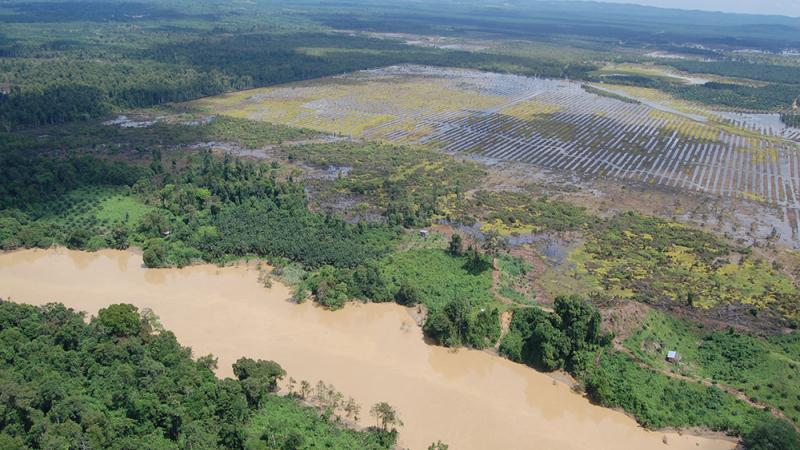
Elephants and the palm oil industry come head-to-head in the Kinabatangan floodplain – a region of great importance for biodiversity and Malaysia's economy
In 1996, Dr. Marc Ancrenaz and Dr. Isabelle Lackman created the organization HUTAN - Kinabatangan Orang-utan Conservation Programme to help the region coexist with wildlife.
We interviewed Marc on an elephant trail along a stretch of forest corridor that his organization had replanted.
Oregon Zoo: You've had more encounters with wild Borneo elephants than most people. Tell us a good story.
Marc Ancrenaz: When we started the work, about 20 years ago, there was less tourism here, so I spent more time with elephants. I was following them in the forest to better understand their biology and ecology. And turns out that one of the elephants started to know me, a female. And she knew my voice, and sometimes she would come, she would leave the herd, come quite close, a few meters away. And so we would interact, I would talk to her, and then she would go, very quietly.
And once, I was with one of my friends and we were sitting on a log in an open area, and the elephants were passing by, maybe 50, 60 meters away. And I saw this female, Putri, so I told my friend if I call this female, she's gonna come. And of course he don't believe. So I call Putri! And she stopped, and she took the smell, and she came. And so at this time, this open area was covered with tall grass, so we just saw the upper part of the body. So she came, came, came, came, came, and she stopped a few meters away, and only then I realized that she had a newborn, who was about two weeks old. Very very tiny. I didn't see him before, he was in the grass.
And what she did next was amazing. Very gently, she pushed the newborn with her trunk all the way to me, so the baby could take my scent, and then they went off.
OZ: Why is this region so important to wildlife?
M: It's one of the most diverse places in Borneo. It is a center of speciation actually. We have a lot of plant species here that we don't find in many other places. And we have a huge diversity of wildlife. Of course, not only large mammals like orang-utans or elephants, but all kinds of other animals, including invertebrates.
OZ: Is this a good place to be an elephant?
M: Well look at this place. You have water close by. It's flat, so you don't have to climb and go down and then climb and go down. When you are an elephant it's very difficult. And you have food everywhere. Plus, people living in Kinabatangan are not hunters. They are fishermen. So if I was an elephant, sure enough, Kinabatangan is the dream place to be.
OZ: How have local communities traditionally regarded these elephants?
M: The locals here are Orang Sungai, the local tribes, they call the elephant Nenek, which means grandmother, to show respect. They will tell you that in the past, the elephants would come to the village very early, maybe once or twice a year, and they wouldn't be destructive at all. People could talk to them. They could tell them very nicely to not come to the village, to not destroy the people's properties and so forth.
OZ: How have attitudes changed over time?
M: A few years ago, we had a group of nine elephants who spent nearly a month close to the school. And every morning when the students would go to school, they would face nine elephants on the road.
People in this village were quite concerned about safety. They didn't like when elephants were entering their properties because they would destroy their belongings, they would cause a lot of economic losses. Something else that used to happen a lot here is the elephants would go into the graveyards of people and play with the tomb, play with the graves, and destroy everything. And no one would like, really, to see their ancestors' bones reappearing because elephants play with them.
So there was all this kind of negative feeling towards the elephants. But at the same time, traditionally, people used to respect the elephants. So it was really a new situation. By working with community and by identifying ways to mitigate this conflict or to protect the graveyards, actually people realized that they had to learn how to share the forest with the elephants.
Today what I really like is when there are elephants around, there is a lot of tourists of course, looking for elephants, but now, what you see as well is the local people. They take their kids, they go in their boat, and they come to just see the elephants. They really appreciate the fact that elephants are living here in Sukau.
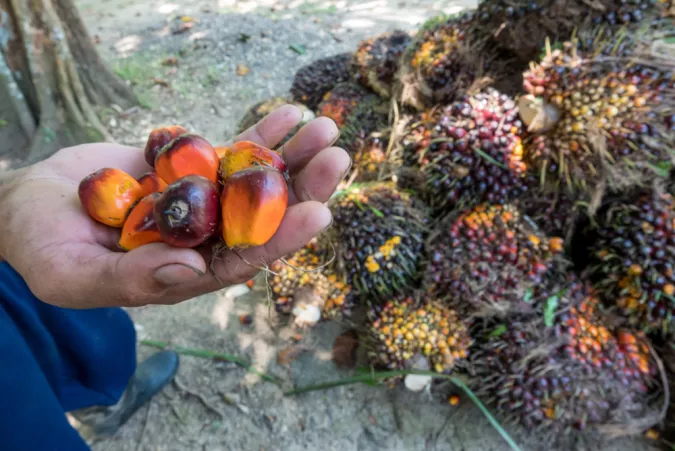
OZ: How has the palm oil industry shaped this region?
M: Kinabatangan is the number one production area of palm oil for the entire country of Malaysia. So it's a really important area for agriculture. Ninety percent of the floodplain has been converted, meaning the forest as been converted, has been destroyed, and replaced with palm oil plantation.
OZ: Why is there a conflict between elephants and palm oil companies?
M: The major problem we are facing in Sabah today, at least regarding elephants, is the fact that their habitat is more and more fragmented. Elephants need to cover huge areas to fulfill their needs. And since their natural habitat is fragmented, during their migration, they enter people's crops or oil palm plantation. And the problem is that when elephants go into oil palm plantations, they can be extremely destructive, especially with the young palms, palms that are below four years old. So lines of palms, one by one, they just pull out the palm and they eat the heart. And this can be extremely costly, because a group of elephants can destroy thousands of palms in no time.
OZ: How have plantations responded?
M: A lot of plantations have decided to protect their estate with electrical fences or a drain. Because when the drain is very steep, it's difficult for the animals to cross. Problem is that sooner or later, the elephants will go through a fence, especially if the fence is not maintained well enough. Then they go into the plantation, and they are faced with a maze of electrical fences. They get lost inside this plantation, because fences are everywhere and they cannot get back to the forest. And when they are stuck in the plantation like this, well, they will destroy more and more palms.
OZ: How do forest corridors help prevent events like this?
M: Along the river in Kinabatangan, the soil is hard and not too wet. But if you go a little bit away from the river, we have what we call a back-swamp area. It's very swampy, very wet, and of course elephants are big and heavy. They really don't like to go into the swamp for their movements. So they must use the riparian area for their migration. And when you don't have a forest here, but you have a palm oil plantation, well, you have a problem, because the elephants cannot cross it. Or if they do, they will create conflict. So this is one reason why I think that re-establishing corridor forest along the riparian areas, along the river is important.
OZ: How do you go about replanting?
M: Well tree-planting, it's extremely expensive and costly. It's extremely difficult, too. The team who is doing the work here is really an amazing team because the work they do is really tough. To maintain a plot, to take care of your seedlings, it's really a long-term commitment. If it's well done, the forest can regenerate.
So this plot is about 10 years old. And as you can see, it's still what we would call regenerating forest. The canopy is nearly closed. And now what is really exciting to see is to see elephants, orang-utan, gibbons, monkeys. They come and use this forest now. And by doing so, they are dispersing seeds of other tree species. Here for example, where the team planted 20 species of trees, we have today more than 50 species going. So it's mimicking the natural regeneration of a forest.
OZ: Is it possible for elephants to survive long-term in such a fragmented landscape?
M: When we speak about corridors or de-fragmenting landscape for elephants, there is a misconception. A lot of time people think they want continuous patches of forest, but it's not necessarily what an elephant needs. First, elephants, they need grass. This is what they eat. Actually, if they go into a forest, they don't find much food. So they need open areas. And they are in direct competition with other species like gibbons or orang-utans here. So we need to find a balance between what we want to reforest and what we want to leave as grass.
But the thing is that the elephants, they can go across the plantation, even if there is no natural vegetation. But of course if you have electrical fences, they cannot anymore. So the idea of recreating permeable landscape for this species would be to have some places with physical forest, like here, but also some places that are not forest, palm oil plantation without fences, for example.
So a way forward would be to just protect the [oil palm] plots that have been newly planted, and to remove the fences from everywhere else. And you would have a situation where you would have a mosaic of fences here and there just to protect the new plots, and the rest would be open. So you would have elephants moving from one patch of forest to the next through this plantation, and we are pretty sure that the damages would be really really really low. Problem is that we have to test this idea, and so far not many people want to take the risk.
OZ: Are the palm oil companies open to dialogue? Do they trust you?
M: So, we have been engaging with the palm oil industry for years now, because species like the orang-utan and the elephants, they are leaving the forest and they go inside these plantations. So if we want to really try to conserve this species, we don't have any other choice but engaging with these people where the animals are.
Sometimes people don't want to engage with us, but a lot of times at least they want to listen to what we say and we have good partnership with a few these estates. Some of these estates, they are like us - they don't consider wildlife as a liability, if you want. They really would like to improve their own practices to give a chance to iconic species like elephants, like orang-utan. But it will be a long journey, because we need to build trust and it's really difficult. And then we need to move forward together. And it's brand new. No one knows right now what an orang-utan or what an elephant needs to survive in an agro-industry landscape, because no one else studied that. It's a new situation, and things are changing fast.
So it's really exciting in a way, because I do think that this is a future for the species, for the large mammals. We really need to look outside of protected forest because a lot of populations are going to leave this protected forest when they disperse. So we need to work in these areas that are not protected.
OZ: What's an example of a company or estate that's doing the right thing?
M: I don't want to give the names, because they don't want the publicity.
So we are working with a local estate manager here. Their estate is about 10,000 hectares. They approached us and they wanted to recreate corridors of forest along the river inside their estate, so they are planting trees. And their plantation is usually visited by elephants. And after discussing with us, they decided to remove all their fences. Because they said this is elephants' land, we have encroached on their land, we want elephants in our estate now. And the only thing they do is to protect the newly planted areas.
And of course we work with this estate to try to assess the extent of conflict and economical cost of them. But so far, so good. It seems that it works if you just protect the small plot, I mean the newly planted plot, the damages are very minimum.
This is one example, there are many more. Not everyone yet, within this industry, has understood the value of managing natural resources better, but I do see a change, things happening. Too slowly maybe, but things are changing. Which is, for me, hope.
OZ: You've been here for 20 years now, what can you say about the pace of conservation progress in Sabah?
M: Twenty years ago, wildlife conservation was not really a political agenda. Actually people at this time still believe that Sabah was covered with pristine forest everywhere, and it was quite seldom that people would speak about orang-utans or elephants in the newspaper. Today, it's almost every day. There is an article about wildlife or about conservation, about hunting, about better management of the natural resources. What I mean is that in 20 years, this has become embedded in the political agenda, the management of the natural resources.
When we started the work 20 years ago in Sabah, there was only 12% of the landmass fully protected. Today it's 28%. It's a lot, it's almost 1/3 of the state fully protected.
So the next challenge will be to engage with politicians, to engage with the people who are owning the unprotected areas. These are palm oil companies, these are local communities, timber companies. We need to work together to design new strategies that will allow for wildlife to survive outside of these protected forests.
OZ: How has science helped inform new management strategies?
M: I do believe that science has a role to play. For example, by doing all the remote sensing analyses of Kinabatangan a few years ago, we were able to identify areas that have been planted with palm, but that are under-productive, because the soil is not good, or whatever reasons. It's interesting because a few times it has been possible for us to approach the palm owners and to show them this kind of information. And sometimes they have no idea. And a couple of times, the people realized that palms were not necessarily the best crop to have in these particular areas, and they are now seeking for advice about what to plant. And of course our advice is to tell them to plant trees. And so I hope that by working, by engaging more with an industry like the oil palm industry, conservationists, as scientists, we can bring information that then can influence their own decision and the decision of the oil palm industry.
OZ: In Portland and across the U.S., there are many people who'd like to help but don't know how. Any advice for them?
M: Okay something that everyone needs to realize is that the palm oil issue is highly complex. It's not black and white. And for every single complex problem, there is no such thing as a simple solution. The solution is also very complex.
As consumers, we are all part of the problems. We are all consuming palm oil, whether we like it or not. So we are all part of the problem, we have to acknowledge this. But at the same time, we are also able to be part of the solution. We should, for example, as consumers, take only products that are made with sustainable palm oil. Meaning, oil that is produced with best practices.
I don't believe that the boycott in itself is going to solve the problem. This is often the simple solution that is presented to the public. It's not working like that. The boycott in itself won't work. What will though, is to send a very strong signal to the industry or to the government to tell them, "Well, as consumer, we will only buy oil if it's produced sustainably.
Today it's easier to do this because zoos in the USA have produced apps that tell people what product are using sustainable palm oil, what product are not. So as a consumer, you can use these apps and make choice. You choose to support the industry players who are really making an effort.
OZ: Are you hopeful for the wildlife of this region?
M: Wildlife conservation is, of course, very frustrating because everywhere we see we are losing the fight, okay? I spent 20 years fighting for the orang-utans, they are all critically endangered today. We are fighting for the elephants, their numbers are going down. So this is very depressing.
At the same time, when I see how these animals can adapt, when I realize how nature is resilient, I do believe the idea is not to protect everything, the idea is to give a chance to nature. The idea is to give a chance to these animals. And then they will recover. I'm convinced of that. But the thing is, we have to give them a chance. If everything is destroyed, there is no way they are going to recover.
Elephant and aerial photos courtesy of HUTAN-KOCP.
More News
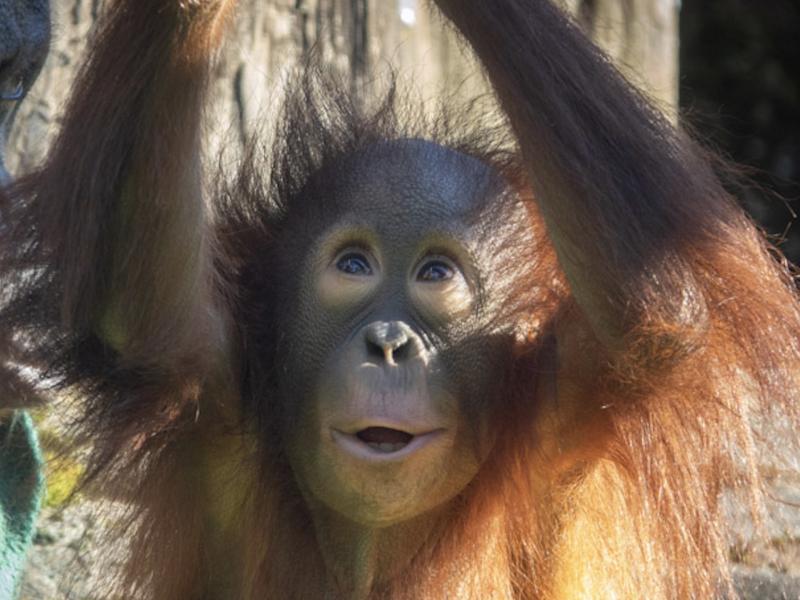
Jolene turns 2: Zoo to celebrate orangutan's 2nd birthday
The littlest member of the orangutan family is celebrating a big milestone this week: Jolene will turn 2 on Saturday.April 12, 2024
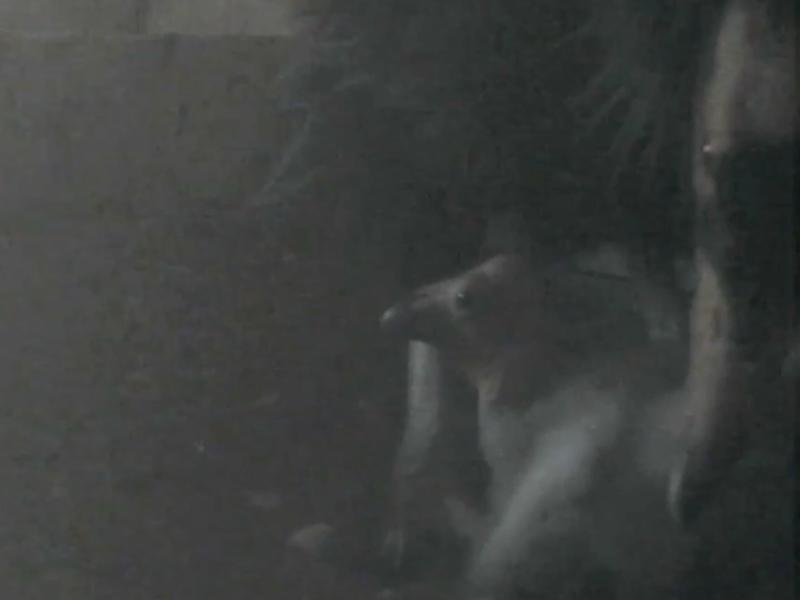
Seven chicks and counting: Zoo welcomes first condors of 2024
Seven fluffy chicks hatched last month at the Oregon Zoo’s Jonsson Center for Wildlife Conservation.April 5, 2024
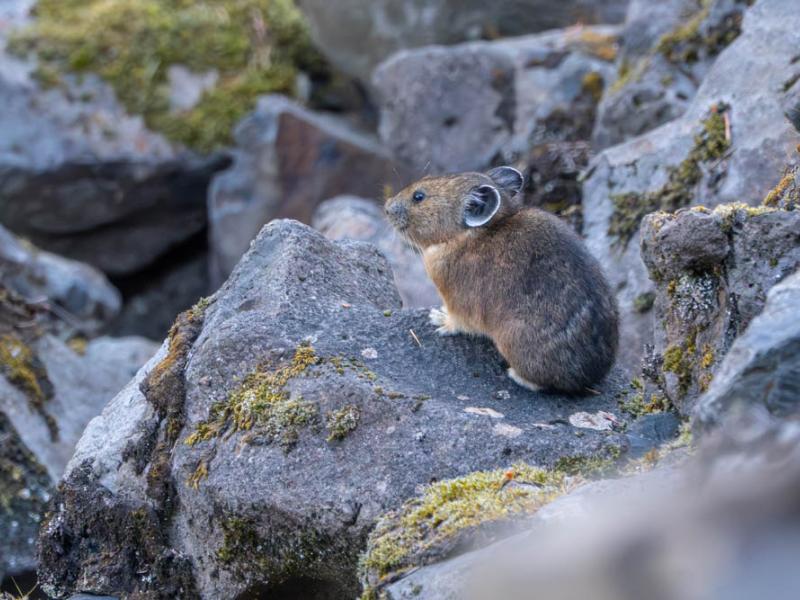
Zoo seeks pika watchers for summer season
The zoo is recruiting volunteers to seek out one of the Columbia River Gorge’s fluffiest residents: the American pika.April 3, 2024

